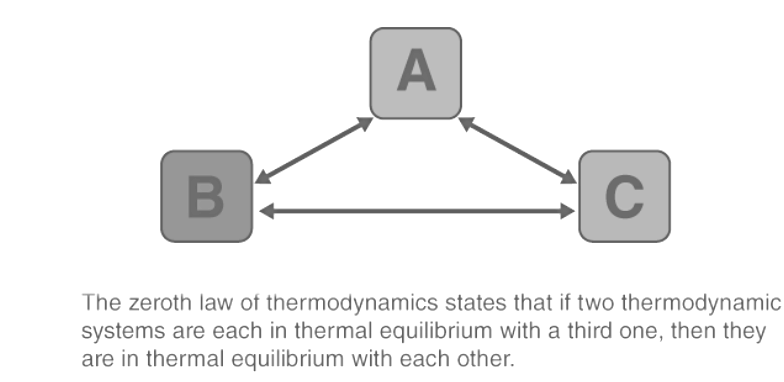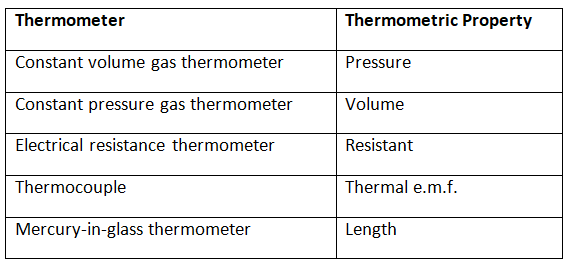The Zeroth Law of Thermodynamics, one of the four fundamental laws in thermodynamics, was formulated by Ralph H. Fowler. Interestingly, this law was developed at a later time compared to the original three laws. However, there was initial confusion regarding its classification, whether it should be considered the fourth law or given a different name. This complication arose because the new law provided a clearer definition of temperature and essentially superseded the statements made by the other three laws. Eventually, Fowler resolved this conflict by assigning a name to the law.
The zeroth law of thermodynamics introduces the concept of temperature as a measure of thermal equilibrium.
What is Zeroth Law of Thermodynamics?
The zeroth law of thermodynamics states that if two bodies, 'A' and 'B', are separately in thermal equilibrium with a third body, 'C', then 'A' and 'B' will also be in thermal equilibrium with each other. This fundamental principle of thermodynamics relies on temperature measurements.

The zeroth law of thermodynamics can be expressed in various ways, but in simple terms, it can be summarized as follows: "Systems in thermal equilibrium have the same temperature."
The zeroth law emphasizes the importance of temperature measurement, as it determines whether heat will transfer between objects. This principle applies regardless of how the objects interact. For instance, even if two objects are not in direct physical contact, heat can still be transferred through radiation. However, the zeroth law states that if systems are in thermal equilibrium, no heat flow occurs between them.
Thermal Equilibrium
Temperature is a property that distinguishes thermodynamics from other sciences. This property can distinguish between hot and cold. When two or more bodies at different temperatures are brought into contact, then after some time, they attain a common temperature, and they are said to exist in thermal equilibrium.
Systems are said to be in thermal equilibrium if there is no heat transfer, even if they are in a position to transfer heat, based on other factors. For example, if we put food in the refrigerator overnight, then the food is in thermal equilibrium with the air of the refrigerator. Heat no longer flows from food to the air or from the air to the food, and this state is known as thermal equilibrium.
Zeroth Law of Thermodynamics Example and Applications
The zeroth law of thermodynamics is important for the mathematical formulation of thermodynamics or, more precisely, to state the mathematical definition of temperature. This law is mostly used to compare the temperatures of different objects.
If we want to measure the accurate temperature, a reference body is required, and a certain characteristic of the body changes with temperature. The change in the characteristic may be taken as an indication of a change in temperature. The selected characteristic is known as thermodynamic property.
Nonetheless, the most common application of the zeroth law of thermodynamics can be seen in thermometers. We can observe the zeroth law in action by taking a very common thermometer having mercury in a tube. As the temperature increases, this mercury expands since the area of the tube is constant. Due to this expansion, the height is increased. Now, the increase in the height of the mercury label shows the changes in temperature and basically helps us to measure it.
There are different kinds of thermometers that can be used depending on their thermometric property, and they are as follows.
Similarly, another example of the zeroth law of thermodynamics is when you have two glasses of water. One glass contains hot water, and the other contains cold water. Now, if we leave them on the table for a few hours, they will attain thermal equilibrium with the temperature of the room.













